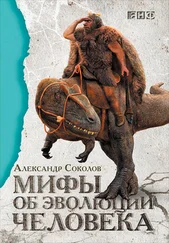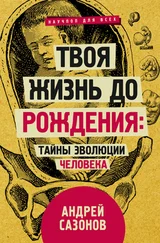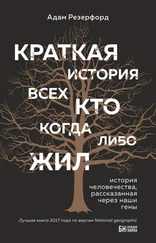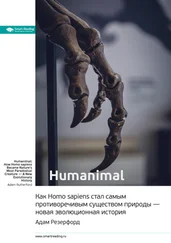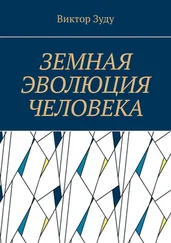Andrea Camperio Ciani and Elena Pellizzari, Fecundity of paternal and maternal non-parental female relatives of homosexual and heterosexual men, PLoS ONE 7 (12): e51088 (5 December 2012).
Ignacio H. Chapela et al., Evolutionary history of the symbiosis between fungus-growing ants and their fungi, Science 266 (5191): 1691–4 (9 December 1994).
Nicola S. Clayton et al., Can animals recall the past and plan for the future? Nature Reviews Neuroscience 4: 685–91 (1 August 2003).
Malcolm J. Coe, «Necking» behaviour in the giraffe, Journal of Zoology 151 (3): 313–21 (March 1967).
R. C. Connor et al., Two levels of alliance formation among male bottlenose dolphins ( Tursiops sp .), PNAS 89 (3): 987–90 (1 February 1992).
G. Cornelis et al., Retroviral envelope syncytin capture in an ancestrally diverged mammalian clade for placentation in the primitive Afrotherian tenrecs, PNAS 111 (41): e4332–E4341 (14 October 2014)
M. Dannemann and J. Kelso, The contribution of Neanderthals to phenotypic variation in modern humans, American Journal of Human Genetics 101 (4): 578–89 (5 October 2017).
Charles R. Darwin, The Descent of Man, and Selection in Relation to Sex (John Murray, 1871); в русском переводе, например: Ч. Дарвин, «Происхождение человека и половой отбор», Сочинения, т. 5, Изд-во АН СССР, Москва, 1953.
R. D’Anastasio et al., Micro-biomechanics of the Kebara 2 hyoid and its implications for speech in Neanderthals, PLoS ONE 8 (12): e82261 (18 December 2013).
Gypsyamber D’Souza et al., Differences in oral sexual behaviors by gender, age, and race explain observed differences in prevalence of oral human papillomavirus infection, PLoS ONE 9 (1): e86023 (24 January 2014).
Robert O. Deaner et al., Monkeys pay per view: Adaptive valuation of social images by rhesus macaques, Current Biology 15: 543–8 (29 March 2005).
Robert O. Deaner et al., Overall brain size, and not encephalization quotient, best predicts cognitive ability across non-human primates, Brain, Behaviour and Evolution 70: 115–24 (18 May 2007).
Volker B. Deecke, Tool-use in the brown bear ( Ursus arctos ), Animal Cognition 15 (4): 725–30 (July 2012).
Megan Y. Dennis et al., Evolution of human-specific neural SRGAP2 genes by incomplete segmental duplication, Cell 149 (4): 912–22 (11 May 2012).
Dale G. Dunn et al., Evidence for infanticide in bottlenose dolphins of the Western North Atlantic, Journal of Wildlife Diseases 38 (3): 505–10 (July 2002).
Nathan J. Emery, Cognitive ornithology: The evolution of avian intelligence, Philosophical Transactions of the Royal Society B 361 (1465): 23–43 (29 January 2006).
Karin Enstam Jaffe and L. A. Isbell, After the fire: Benefits of reduced ground cover for vervet monkeys ( Cercopithecus aethiops ), American Journal of Primatology 71 (3): 252–60 (March 2009).
Robert Epstein et al., «Self-Awareness» in the pigeon, Science 212 (4495): 695–6 (8 May 1981).
C. Esnault, G. Cornelis, O. Heidmann and T. Heidmann, Differential evolutionary fate of an ancestral primate endogenous retrovirus envelope gene, the EnvV syncytin , captured for a function in placentation, PLoS Genetics 9 (3): e1003400 (28 March 2013).
Ian T. Fiddes et al., Human-specific NOTCH2NL genes affect notch signalling and cortical neurogenesis, Cell 173 (6): 1356–69.e22 (31 May 2018).
Simon E. Fisher and Sonja C. Vernes, Genetics and the language sciences, Annual Review of Linguistics 1: 289–310 (January 2015).
Emma A. Foster et al., Adaptive prolonged postreproductive life span in killer whales, Science 337 (6100): 1313 (14 September 2012).
Masaki Fujita et al., Advanced maritime adaptation in the western Pacific coastal region extends back to 35,000–30,000 years before present, PNAS 113 (40): 11184–89 (October 2016).
Cornelia Geßner et al., Male — female relatedness at specific SNP-linkage groups influences cryptic female choice in Chinook salmon ( Oncorhynchus tshawytscha ), Proceedings of the Royal Society B 284 (1859) (26 July 2017).
J. Goodall, The Chimpanzees of Gombe: Patterns of Behavior, Belknap Press, 1986.
Kirsty E. Graham et al., Bonobo and chimpanzee gestures overlap extensively in meaning, PLoS Biology 16 (2): e2004825 (27 February 2018).
Kristine L. Grayson et al., Behavioral and physiological female responses to male sex ratio bias in a pond-breeding amphibian, Frontiers in Zoology 9 (1): 24 (18 September 2012).
Daniele Guerzoni and Aoife McLysaght, De novo origins of human genes, PLoS Genetics 7 (11): e1002381 (November 2011).
Michael D. Gumert and Suchinda Malaivijitnond, Long-tailed macaques select mass of stone tools according to food type, Philosophical Transactions of the Royal Society B 368 (1630): 20120413 (17 October 2013).
Chang S. Han and Piotr G. Jablonski, Male water striders attract predators to intimidate females into copulation, Nature Communications 1, article number 52 (10 August 2010).
Sonia Harmand et al., 3.3-million-year-old stone tools from Lomekwi 3, West Turkana, Kenya, Nature 521 (7552): 310–15 (20 May 2015).
Heather S. Harris et al., Lesions and behavior associated with forced copulation of juvenile Pacific harbor seals ( Phoca vitulina richardsi ) by southern sea otters ( Enhydra lutris nereis ), Aquatic Mammals 36 (4): 331–41 (29 November 2010).
B. J. Hart et al., Cognitive behaviour in Asian elephants: Use and modification of branches for fly switching, Animal Behaviour 62 (5): 839–47 (November 2001).
Joseph Henrich, Demography and cultural evolution: How adaptive cultural processes can produce maladaptive losses: the Tasmanian case, American Antiquity 69 (2): 197–214 (April 2004).
C. S. Henshilwood et al., Emergence of modern human behavior: Middle Stone Age engravings from South Africa, Science 295 (5558): 1278–80 (15 February 2002).
Christopher Henshilwood et al., Middle Stone Age shell beads from South Africa, Science 304 (5669): 404 (16 April 2004).
Thomas Higham et al., Testing models for the beginnings of the Aurignacian and the advent of figurative art and music: The radiocarbon chronology of Geißenklösterle, Journal of Human Evolution 62 (6): 664–76 (June 2012).
Catherine Hobaiter and Richard W. Byrne, Able-bodied wild chimpanzees imitate a motor procedure used by a disabled individual to overcome handicap, PLoS ONE 5 (8): e11959 (5 August 2010).
D. L. Hoffmann et al., U-Th dating of carbonate crusts reveals Neandertal origin of Iberian cave art, Science 359 (6378): 912–15 (23 February 2018).
S. Ishiyama and M. Brecht, Neural correlates of ticklishness in the rat somatosensory cortex, Science 354 (6313): 757–60 (11 November 2016).
Josephine C. A. Joordens, Homo erectus at Trinil on Java used shells for tool production and engraving, Nature 518: 228–31 (12 February 2015).
Hákon Jónsson et al., Speciation with gene flow in equids despite extensive chromosomal plasticity’, PNAS 111 (52): 18655–60 (30 December 2014).
Juliane Kaminski et al., Human attention affects facial expressions in domestic dogs, Scientific Reports 7: 12914 (19 October 2017).
Dean G. Kilpatrick et al., Drug-facilitated, Incapacitated, and Forcible Rape: A National Study, National Crime Victims Research & Treatment Center report for the US Department of Justice (2007).
Читать дальше
Конец ознакомительного отрывка
Купить книгу

